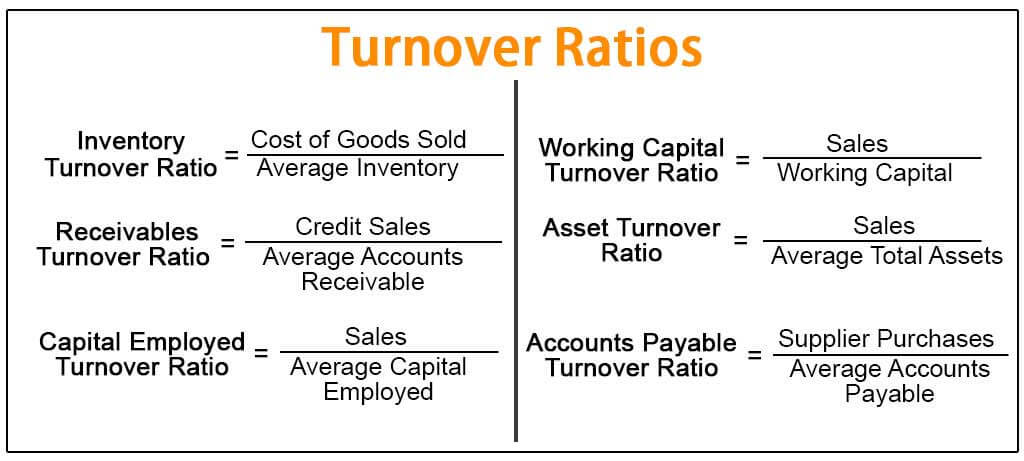
Instead, total purchases will have to be calculated by adding the ending inventory to the cost of goods sold and subtracting the beginning inventory. Most companies will have a record of supplier purchases, so this calculation may not need to be made. Then, divide the total supplier purchases for the period by the average accounts payable for the period.
How Do You Calculate the Accounts Payable Turnover Ratio?
Consider the factors of your specific industry and your current financial position to set the right strategic target for your own business. If your AP turnover for the same quarter is above 5.2, that would look better to creditors. However, it might also mean that your company pays its bills more quickly than you need to, tying up cash you could use in other ways.
Enhancing Supplier Relationships

Whether your accounts payable turnover is high or low depends on the time frame you’re considering, your industry, and your current financial strategy. Your suppliers take note of your timely payments and extend your terms to Net 30 and Net 45. This action will likely cause your ratio to drop because you’ll be paying creditors less frequently than before.
What is the Accounts Payable Turnover Ratio, or AP Turnover Ratio?
Now let’s have a look at an AP turnover example so you can see exactly how to find this ratio in real life. For example, if you were a car manufacturer, you might look up Ford and discover it has a 5.20 payable turnover for the most recent quarter. In other words, a high or low ratio shouldn’t be taken on face value, but instead, lead investors to investigate further as to the reason for the high or low ratio. Sign up to receive more well-researched small business articles and topics in your inbox, personalized for you.
Improving Cash Flow Management
It may signal cash flow problems, indicating that the company is not efficiently settling its payables. Additionally, a low ratio might suggest that the company is missing out on early payment discounts, which could lead to higher operational costs. In this example, the calculated AP turnover ratio of 4 means that, on average, the company pays off its entire accounts payable to suppliers four times a year. The AR turnover ratio formula is Net Credit Sales divided by the Average Accounts Receivable balance for the period measured. Similarly calculated, the AP turnover ratio formula is net credit purchases divided by Average Accounts Payable balance for that time period. Accounts payable is short-term debt that a company owes to its suppliers and creditors.
Monitor AP Turnover in Real Time with Mosaic
AP turnover shows how often a business pays off its accounts within a certain time period. Accounts receivable turnover ratio shows how often a company gets paid by its customers. Keep track of whether the accounts payable turnover ratio is increasing or decreasing over time for valuable insight into how the business is doing financially.
It means the company has plenty of cash available to pay off its short-term debts in a timely manner. This can indicate that the company is managing its debts and cash flow effectively. This financial ratio allows you to compare a firm’s credit purchases against its average accounts payable (AP) amount, in order to determine how frequently it pays its suppliers. With AP automation, companies gain better visibility and control over their cash flow. Automated systems can provide real-time insights into payable and spending patterns, enabling more strategic decision-making. Improved cash flow management inherently affects the AP turnover ratio by ensuring funds are available for timely payments.
- Faster invoice processing means that payments can be processed more quickly, directly influencing the AP turnover ratio by potentially increasing it.
- Accounts receivable turnover ratio shows how effective a company is at collecting money owed by clients.
- Your average AP balance is simply the average between your starting accounts payable balance and your ending accounts payable balance over a given time period.
- When the turnover ratio is increasing, the company is paying off suppliers at a faster rate than in previous periods.
Plan to pay your suppliers offering credit terms with lucrative early payment discounts first. Drawbacks to the what is bookkeeping ratio relate to the interpretation of its meaning. How does the accounts payable turnover ratio relate to optimizing cash flow management, external financing, and pursuing justified growth opportunities requiring cash?
Suppliers are more likely to offer favorable terms and discounts to companies that consistently pay on time, which can positively impact the AP turnover ratio. To optimize the AP turnover ratio, companies can leverage technology and AP automation to improve the efficiency of their accounts payable processes. Automated AP systems can streamline invoice processing, reduce errors, and provide real-time visibility into payment status.
Automation reduces the likelihood of errors and speeds up the resolution of any disputes with suppliers. The ratio does not account for qualitative aspects like the quality of the supplier relationship or the nature of goods and services received. Strong supplier relationships can lead to more favorable payment terms, affecting the ratio independently of financial considerations. Comparing average ratios helps assess a company’s payables management relative to others in the same industry, keeping in mind that industry norms can vary. The AP turnover ratio is a versatile financial metric with several uses across different aspects of business analysis and management.